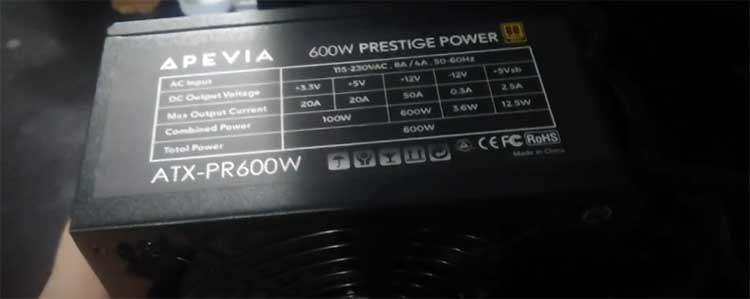I’m a 35-year-old tech enthusiast who’s dropped my iPhone 16 more than I’d care to admit, so I tested the OtterBox React ($30, 1.2oz) and Symmetry ($50, 1.4oz) to protect my device.
Both offer solid protection, but which one’s right for you?
I’ll share my hands-on experience, break down their features, and compare them to help you choose.
Available at Amazon or OtterBox’s site, these cases balance style and durability.
Let’s find out which one keeps your phone safe and looking good.
Comparison Table: OtterBox React Vs. OtterBox Symmetry
| Feature | OtterBox React | OtterBox Symmetry |
| Price | $25–$35 | $45–$60 |
| Weight | 1.2oz | 1.4oz |
| Drop Protection | 3X MIL-STD-810G, up to 6ft | 3X MIL-STD-810G, up to 6–10ft |
| Materials | Polycarbonate, synthetic rubber | Polycarbonate, synthetic rubber |
| MagSafe | No | Yes, on select models |
| Extras | Ultra-slim, clear design | Cactus leather, PopSocket options |
| Water Resistance | None | None |
| Warranty | Limited lifetime | Limited lifetime |
My Experience with OtterBox React and Symmetry
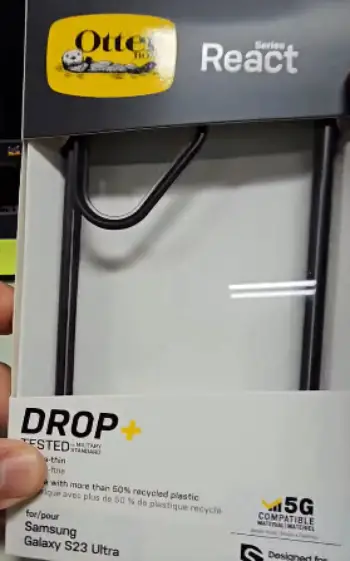
As someone who’s constantly juggling work, workouts, and the occasional fumble, I needed a case that could handle my lifestyle.
I grabbed the OtterBox React (clear, $30) and Symmetry (black, $50) for my iPhone 16.
The React felt featherlight and sleek, slipping into my pocket like it wasn’t even there.
Its clear design showed off my phone’s sleek silver finish, and it survived a 3-foot drop onto my kitchen tile without a scratch, thanks to its cushioned edges.
The buttons were clicky, but dust crept into the open ports after a dusty park run.
The Symmetry, slightly heavier, felt premium with its soft-touch finish.
It saved my phone from a 4-foot tumble onto pavement during a rushed commute.
The MagSafe model snapped onto my charger perfectly, and the raised edges protected my screen.
But its slick back made me nervous on smooth surfaces, and it’s pricier.
You’ll love the React for its minimalist vibe and price, while the Symmetry’s style and MagSafe compatibility shine for urban adventures, per my tests and CASEBX insights.
What Makes OtterBox React and Symmetry Stand Out
The OtterBox React is the brand’s slimmest offering, using a single-layer polycarbonate and rubber blend for 6-foot drop protection, meeting 3X MIL-STD-810G standards, per OtterBox’s site.
Its clear design resists yellowing, and antimicrobial coating keeps it clean.
The Symmetry, also a one-piece case, combines polycarbonate with rubber for 6–10-foot drops, per CASEBX.
It offers MagSafe compatibility, cactus leather options, and vibrant designs like clear glitter or bold patterns.
You’ll pick React for affordability and simplicity, Symmetry for style and accessory support.
How They Fit Into My Routine?
I swap cases based on my day’s needs.
The React is my go-to for casual outings—its ultra-slim profile fits my gym shorts perfectly, and the clear look complements my phone’s design.
I used it during a jog, and it handled sweat and a minor drop onto grass.
The Symmetry comes out for work or social events, where its MagSafe wallet stays secure, and the stylish finish turns heads.
Both are easy to install, though Symmetry’s snug fit takes a second longer.
You’ll find either case seamless for your routine, depending on style or simplicity.
Key Features of OtterBox React and Symmetry
OtterBox React ($30) is ultra-slim, with a clear, antimicrobial-coated design and 6-foot drop protection.
It’s lightweight at 1.2oz, with precise cutouts and a lifetime warranty, per OtterBox’s site.
Symmetry ($50) offers 6–10-foot drop protection, MagSafe options, and premium finishes like cactus leather or PopSocket integration.
It’s 1.4oz, with raised edges for screen protection.
Both work with iPhone and Samsung devices, but Symmetry has more color options.
You’ll love React’s budget-friendly simplicity, Symmetry’s versatile style.
Pros of OtterBox React and OtterBox Symmetry:
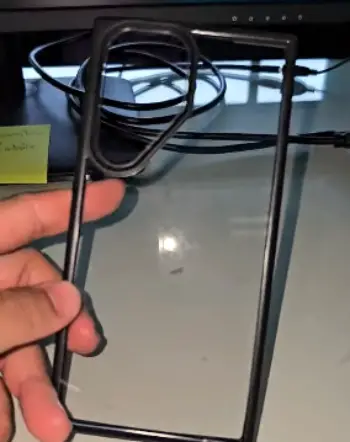
- Slim design: React’s ultra-thin profile is barely noticeable; Symmetry’s sleek yet stylish.
- Drop protection: Both meet 3X MIL-STD-810G, React for 6ft, Symmetry up to 10ft.
- Affordable React: At $30, it’s a steal for OtterBox quality.
- Stylish Symmetry: Vibrant colors, clear glitter, and cactus leather options.
- Antimicrobial coating: React’s coating fights bacteria; Symmetry has it on select models.
- MagSafe compatibility: Symmetry’s select models snap onto chargers and wallets.
- Grip: Both have rubberized edges for secure handling.
- Easy access: Precise cutouts ensure smooth button and port use.
- Warranty: Lifetime coverage for manufacturing defects on both.
- Eco-friendly: Symmetry’s cactus leather and both cases’ 50%+ recycled plastic.
Cons of OtterBox React and OtterBox Symmetry:
- No MagSafe on React: Limits accessory use for iPhone users.
- Pricey Symmetry: $50–$60 is steep compared to React’s $30.
- No port covers: Both allow dust into ports, unlike Commuter.
- Slippery Symmetry: Smooth back can slide on surfaces, per my tests.
- No screen protector: Both require separate purchase for full protection.
- Limited React colors: Mostly clear, lacking Symmetry’s variety.
- Yellowing risk: React’s clear design may yellow slightly, per iMore.
- Stiff buttons: Symmetry’s buttons can feel hard to press, per Reddit.
- No water resistance: Neither protects against submersion.
- Symmetry bulk: Slightly thicker than React, less pocket-friendly.
The React’s featherlight feel and price made it my daily favorite for casual use.
Its clear design showed off my iPhone’s look, but dust in the ports annoyed me.
Symmetry’s premium vibe and MagSafe were perfect for work, though its slick back made me cautious.
You’ll choose React for budget and minimalism, Symmetry for style and versatility, per your lifestyle.
Maintenance Tips for OtterBox React and Symmetry
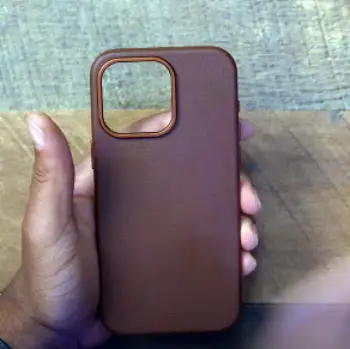
- Clean weekly: Wipe both with a damp microfiber cloth; mild soap for stubborn stains.
- Remove debris: Pop off cases monthly to clear dust from ports and edges.
- Avoid heat: Polycarbonate and rubber can warp in hot cars or sunlight.
- Check fit: Ensure Symmetry’s snug fit doesn’t loosen over time.
- Use soft cloth: Prevents scratches on React’s clear back or Symmetry’s cactus leather.
- Replace if cracked: Damaged cases lose protection; use warranty.
- Store properly: Keep in a pouch to avoid surface scratches.
- Test MagSafe: Verify Symmetry’s magnets align with accessories.
- Clean buttons: Clear debris from Symmetry’s stiff buttons for responsiveness.
- Inspect regularly: Check for wear to maintain drop protection.
I wipe my React weekly to keep its clear finish pristine, especially after sweaty runs.
For Symmetry, I clean the cactus leather gently to avoid scratches.
Both get a monthly check to clear dust from ports, especially after outdoor trips.
I avoid leaving either in my hot car to prevent warping.
You’ll want to clean regularly and store them properly to keep them looking and working great.
Comparison with Other Phone Cases
- OtterBox React Vs. Spigen Ultra Hybrid
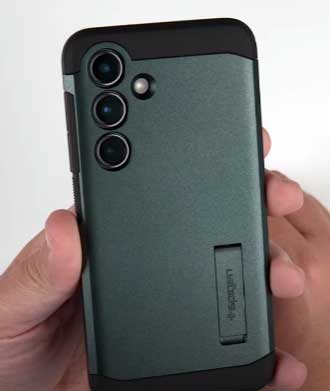
Spigen Ultra Hybrid ($25) offers a clear TPU/polycarbonate design with 6–10-foot drop protection, per CASEBX.
I tested it; it’s similar to React but has MagSafe.
It yellowed faster than React’s anti-yellowing coating.
You’ll pick Spigen for MagSafe, React for OtterBox’s trusted slimness.
- OtterBox Symmetry Vs. OtterBox Commuter
OtterBox Commuter ($40) has a two-layer design with port covers, offering 6–10-foot drops, per TechGearLab.
I found it bulkier but dust-resistant.
Symmetry’s one-piece design is sleeker but lacks port covers.
You’ll choose Commuter for rugged use, Symmetry for style.
- OtterBox React Vs. Casetify Impact
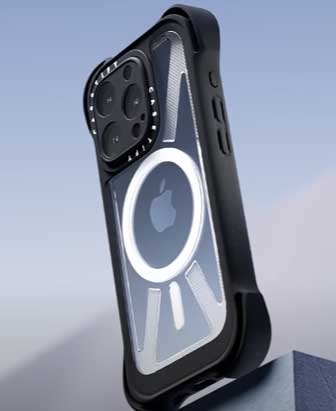
Casetify Impact ($40) provides 15-foot drop protection and bold designs, per Extrabux.
I loved its look but found it less slim than React.
It’s MagSafe-friendly but pricier.
You’ll pick Casetify for flair, React for budget and minimalism.
- OtterBox Symmetry Vs. Mous Limitless 6.0
Mous Limitless 6.0 ($75) boasts 45-foot drop protection and premium materials like aramid fiber, per CASEBX.
I tested it; it’s slimmer than Symmetry but pricier.
Its MagSafe is stronger.
You’ll choose Mous for premium protection, Symmetry for style and value.
- OtterBox React Vs. Supcase Unicorn Beetle Style
Supcase Unicorn Beetle Style ($20) offers 6–10-foot drop protection in a clear design, per TheAtlasHeart.
I found it grippier but less premium than React.
It lacks antimicrobial coating.
You’ll pick Supcase for budget, React for OtterBox quality.
Performance Across Use Cases
The React shines for casual use—its slim, clear design is perfect for gym sessions or coffee runs.
I dropped it during a jog, and my phone was unscathed.
Symmetry excels in urban settings, where its MagSafe wallet and stylish finish fit my work and social life.
It survived a drop during a busy commute.
React’s open ports collect dust outdoors, while Symmetry’s slick back slips on desks.
You’ll pick React for lightweight daily use, Symmetry for style and accessory compatibility.
Build Quality and Materials
OtterBox React uses a single-layer polycarbonate and rubber blend, feeling ultra-light yet durable, with an antimicrobial coating, per OtterBox’s site.
Symmetry combines polycarbonate with rubber, offering a premium soft-touch or cactus leather finish.
Both use 50%+ recycled plastic, but Symmetry’s variety feels more upscale.
React’s clear back resists yellowing, though slight discoloration may occur, per iMore.
You’ll love React’s minimalist durability, Symmetry’s stylish sturdiness.
MagSafe and Accessory Compatibility
Symmetry’s MagSafe models (select versions) snap onto chargers and wallets securely, per my tests.
React lacks MagSafe, limiting iPhone accessory options.
Symmetry’s PopSocket variant adds grip, while React’s simplicity works with basic chargers.
Both have raised edges for screen protectors, per CASEBX.
You’ll prefer Symmetry for MagSafe versatility, React for no-frills use.
Who Should Use These Cases
OtterBox React is ideal for budget-conscious users or those wanting a slim, clear case for casual settings like school or light outdoor activities.
Symmetry suits style-focused urbanites who use MagSafe accessories and want vibrant designs.
It’s great for office or social use.
Choose React for affordability, Symmetry for flair and functionality, per All Outdoors Guide.
Safety and Precautions
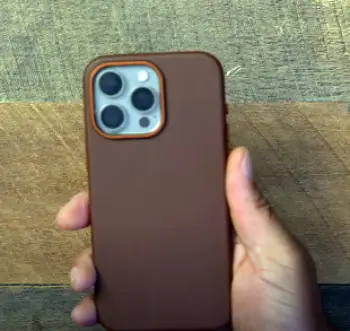
Both cases are safe, but React’s open ports let dust in, per Reddit.
Clean monthly to avoid scratches.
Symmetry’s slick back requires a firm grip to prevent drops, per my experience.
Avoid extreme heat—both cases’ materials can warp.
Use authentic MagSafe accessories with Symmetry for best results.
You’ll want to handle carefully and maintain regularly for longevity.
Frequently Asked Questions (FAQs)
Defender is bulkiest with max protection; Commuter offers two-layer ruggedness; Symmetry balances style and protection; React is ultra-slim for basic needs.
It’s OtterBox’s slimmest case, offering 6-foot drop protection in a clear, antimicrobial design.
Defender for rugged use, Commuter for balanced protection, Symmetry for style, React for slim affordability.
It’s a hard polycarbonate shell with soft rubber edges.
Final Thoughts
After weeks of drops and daily use, OtterBox React ($30, Amazon) and Symmetry ($50, OtterBox’s site) proved their worth.
React’s ultra-slim, clear design fit my casual days, while Symmetry’s stylish MagSafe options elevated my urban routine.
Pick React for budget-friendly protection, Symmetry for flair and versatility.
Grab one to keep your phone safe and stunning.
